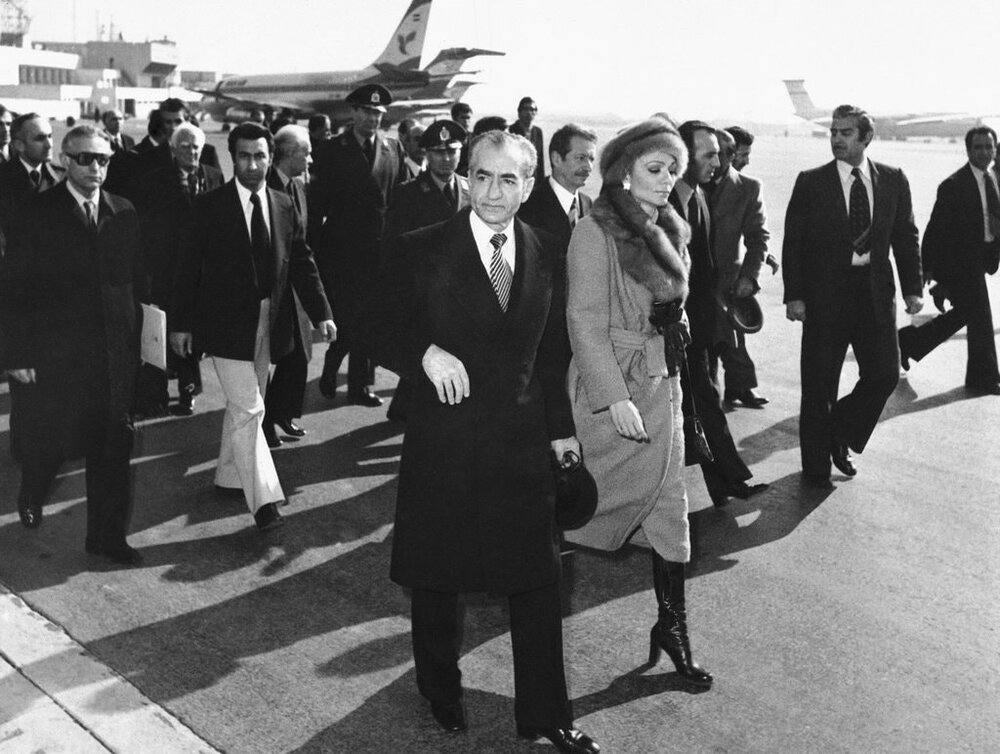How David Rockefeller helped the shah enter the U.S.

TEHRAN — The New York Times has published an article about the U.S. government’s decision in 1979 to admit Mohammed Reza Pahlavi, the last shah of Iran.
The article focuses on the role of David Rockefeller, chairman of the Chase Manhattan Bank, behind the scenes to persuade the Carter administration to admit the former shah.
The following is an excerpt of the article:
A newly disclosed secret history from the offices of Mr. Rockefeller shows in vivid detail how Chase Manhattan Bank and its well-connected chairman worked behind the scenes to persuade the Carter administration to admit the shah, one of the bank’s most profitable clients.
The shah sought refuge in America. But President Jimmy Carter, hoping to forge ties to the new government rising out of the chaos and concerned about the security of the United States Embassy in Tehran, refused him entry for the first 10 months of his exile. Even then, the White House only begrudgingly let him in for medical treatment.
For Mr. Carter, for the United States and for the Middle East it was an incendiary decision.
Although Mr. Carter complained publicly at the time about the pressure campaign, the full, behind-the-scenes story — laid out in the recently disclosed documents — has never been told.
Mr. Rockefeller’s team called the campaign Project Eagle, after the code name used for the shah. Exploiting clubby networks of power stretching deep into the White House, Mr. Rockefeller mobilized a phalanx of elder statesmen.
They included Henry A. Kissinger, the former secretary of state and the chairman of a Chase advisory board; John J. McCloy, the former commissioner of occupied Germany after World War II and an adviser to eight presidents as well as a future Chase chairman; a Chase executive and former CIA agent, Archibald B. Roosevelt Jr., whose cousin, the CIA agent Kermit Roosevelt Jr., had orchestrated a 1953 coup to keep the shah in power; and Richard M. Helms, a former director of the CIA and former ambassador to Iran.
Over lunch at the Knickerbocker Club in New York, Mr. Carter’s special envoy to Tehran, Gen. Robert E. Huyser, told the Project Eagle team that he had urged Iran’s top military leaders to kill as many demonstrators as necessary to keep the shah in power. If shooting over the heads of demonstrators failed to disperse them, “move to focusing on the chests,” General Huyser said he told the Iranian generals.
The records indicate that Mr. Rockefeller hoped for the restoration of a version of the deposed government.
He evidently continued to advocate for some form of restoration long after the shah fled Tehran.
As late as December 1980, Mr. Rockefeller personally urged the incoming Reagan administration to encourage a counterrevolution by stopping “rug merchant type bargaining” for the hostages and instead taking military action to punish Iran if the hostages were not released. He suggested occupying three Iranian-controlled islands in the Persian Gulf.
“The most likely outcome of this situation is an eventual replacement of the present fanatic Shiite Muslim government, either by a military one or a combination of the military with the civilian democratic leaders,” Mr. Rockefeller argued, according to his talking points for meetings with the Reagan transition team.
As Tehran’s coffers swelled with oil revenues in the 1970s, Chase formed a joint venture with an Iranian state bank and earned big fees advising the national oil company.
By 1979, the bank had syndicated more than $1.7 billion in loans for Iranian public projects (the equivalent of about $5.8 billion today). The Chase balance sheet held more than $360 million in loans to Iran and more than $500 million in Iranian deposits.
Mr. Rockefeller often insisted that his concern for the shah was purely about Washington’s “prestige and credibility.” It was about “the abandonment of a friend when he needed us most,” he wrote in his memoirs.
Over lunch at the Knickerbocker Club in New York, Mr. Carter’s special envoy to Tehran, Gen. Robert E. Huyser, told the Project Eagle team that he had urged Iran’s top military leaders to kill as many demonstrators as necessary to keep the shah in power.
If shooting over the heads of demonstrators failed to disperse them, “move to focusing on the chests,” General Huyser said he told the Iranian generals, according to minutes of the lunch. “I got stern and noisy with the military,” he added, but in the end, the top general was “gutless.”
Only after the death of the shah, on July 27, 1980, nine months after his landing in Fort Lauderdale, did the Project Eagle team shift to new objectives. One was protecting Mr. Rockefeller from blame for the crisis.
MH/PA
Leave a Comment